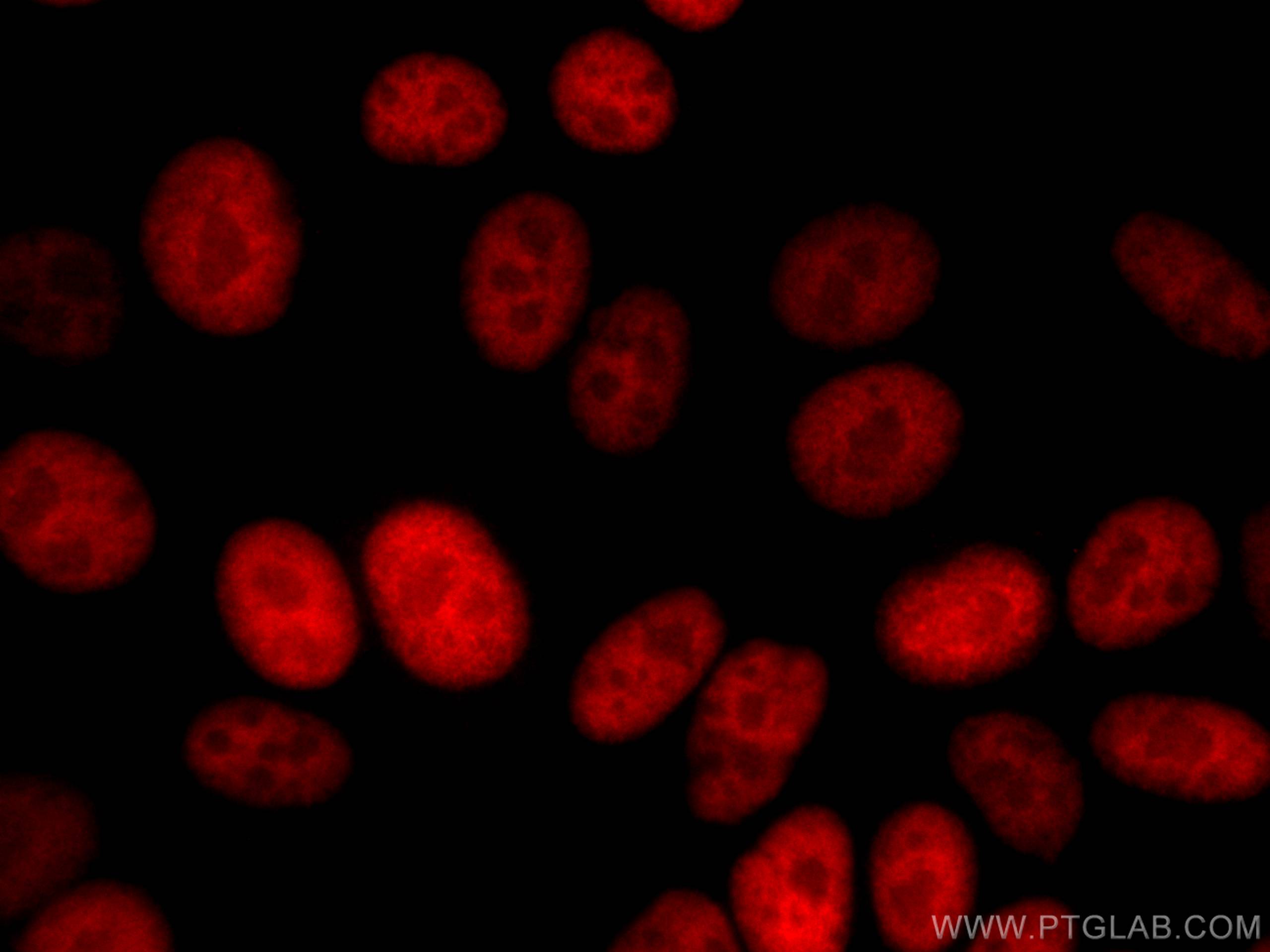Tested Applications
| Positive IF/ICC detected in | HepG2 cells |
Recommended dilution
| Application | Dilution |
|---|---|
| Immunofluorescence (IF)/ICC | IF/ICC : 1:50-1:500 |
| It is recommended that this reagent should be titrated in each testing system to obtain optimal results. | |
| Sample-dependent, Check data in validation data gallery. | |
Product Information
CL594-66016 targets Transketolase in IF/ICC applications and shows reactivity with human samples.
| Tested Reactivity | human |
| Host / Isotype | Mouse / IgG2b |
| Class | Monoclonal |
| Type | Antibody |
| Immunogen |
CatNo: Ag16779 Product name: Recombinant human TKT protein Source: e coli.-derived, PET28a Tag: 6*His Domain: 274-623 aa of BC009970 Sequence: IYSQIQSKKKILATPPQEDAPSVDIANIRMPSLPSYKVGDKIATRKAYGQALAKLGHASDRIIALDGDTKNSTFSEIFKKEHPDRFIECYIAEQNMVSIAVGCATRNRTVPFCSTFAAFFTRAFDQIRMAAISESNINLCGSHCGVSIGEDGPSQMALEDLAMFRSVPTSTVFYPSDGVATEKAVELAANTKGICFIRTSRPENAIIYNNNEDFQVGQAKVVLKSKDDQVTVIGAGVTLHEALAAAELLKKEKINIRVLDPFTIKPLDRKLILDSARATKGRILTVEDHYYEGGIGEAVSSAVVGEPGITVTHLAVNRVPRSGKPAELLKMFGIDRDAIAQAVRGLITKA Predict reactive species |
| Full Name | transketolase |
| Calculated Molecular Weight | 68 kDa |
| GenBank Accession Number | BC009970 |
| Gene Symbol | Transketolase |
| Gene ID (NCBI) | 7086 |
| RRID | AB_2883478 |
| Conjugate | CoraLite®594 Fluorescent Dye |
| Excitation/Emission Maxima Wavelengths | 588 nm / 604 nm |
| Form | Liquid |
| Purification Method | Protein A purification |
| UNIPROT ID | P29401 |
| Storage Buffer | PBS with 50% glycerol, 0.05% Proclin300, 0.5% BSA, pH 7.3. |
| Storage Conditions | Store at -20°C. Avoid exposure to light. Stable for one year after shipment. Aliquoting is unnecessary for -20oC storage. |
Background Information
Transketolase is a key pentose phosphate shunt enzyme that plays an important role in the production of reducing equivalents and pentose sugars. Decreased activity of transketolase has been found in patients with Alzheimer's disease and thiamine deficiency. In addition, as an important biocatalyst in stereo-specific carbon-carbon bond synthesis, transketolase has been widely used in industry to produce aromatic products.
Protocols
| Product Specific Protocols | |
|---|---|
| IF protocol for CL594 Transketolase antibody CL594-66016 | Download protocol |
| Standard Protocols | |
|---|---|
| Click here to view our Standard Protocols |




